| |
|
GREATER LONDON |
| CITY OF
WESTMINSTER - 3 |
|
| <City of London
I> <City
of London II> <City of London III> <City of Westminster-1> <City
of Westminster-2> <City of
Westminster - 4> <Borough
of Kensington & Chelsea> <Borough of
Wandsworth> |
| |
| Unfortunately I have very few images of the
remaining monuments in Westminster Abbey. Those below are from
photographs taken and kindly sent to me by Dr John Physick. The are also
two etchings from Stothard and that is all. Ordinary mortals can not
longer taken photographs in the church but any taken in the good old
days I will most happily receive. I have avoided tedious lists as unlike
the earlier sections this would be mainly lists and little else. |
| |
| St John the Baptist's Chapel |
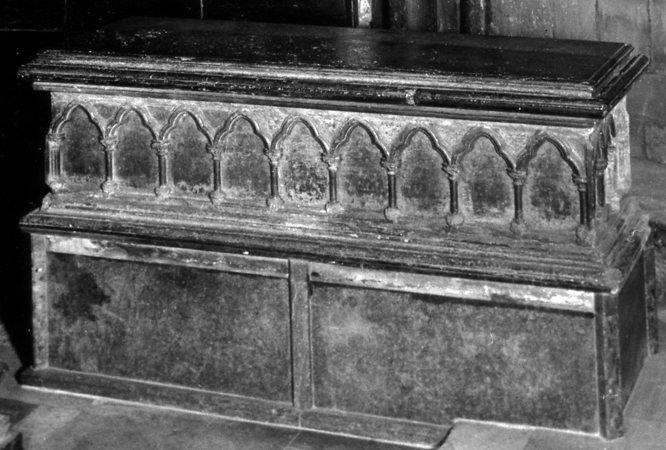
|
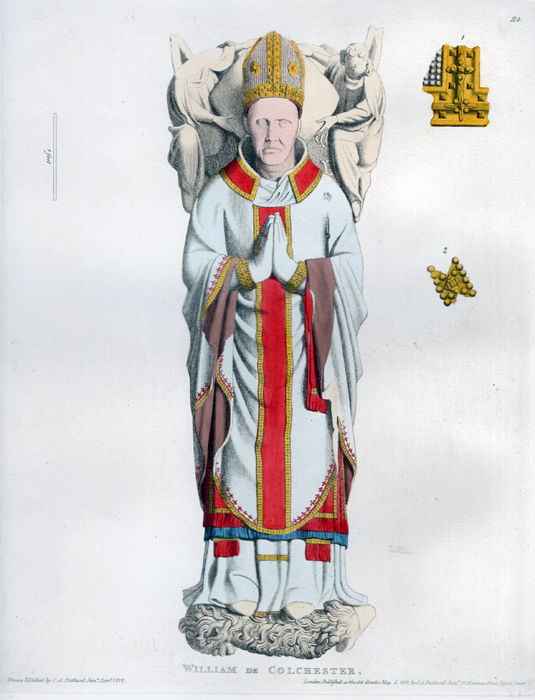
Above and right bottom:
Right top:
Hugh (1304) & Mary de
Bohum
Children of Humphrey de Bohum, Earl of Hereford
& Elizabeth, 4th Daughter of Edward I. Purbeck.
Originally in St Nicholas's Chapel |
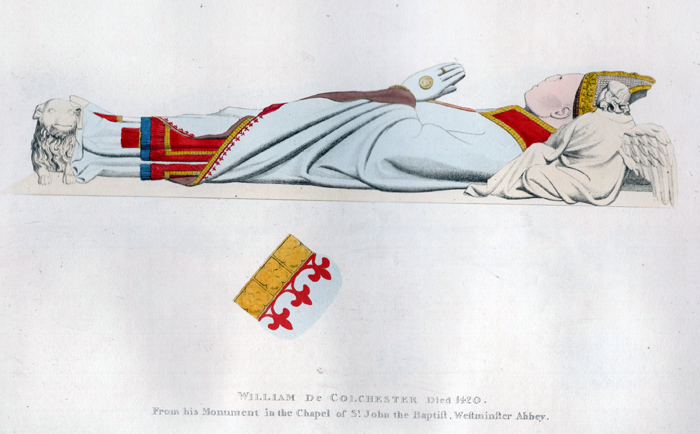 |
|
| South Ambulatory |
South Transept
(Poets' Corner) |
St Andrew's Chapel |
North Transept |
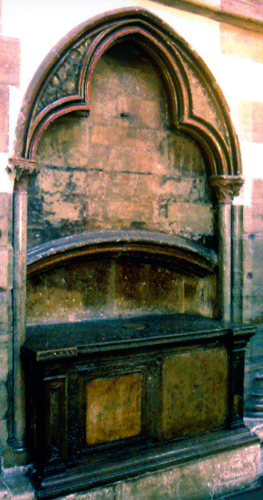
|
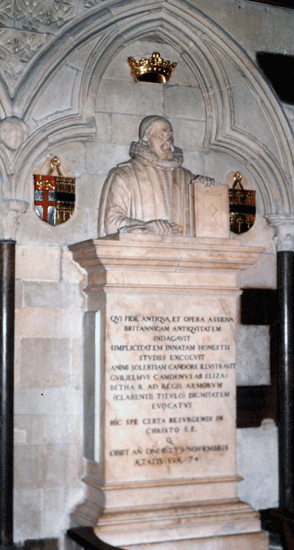
|
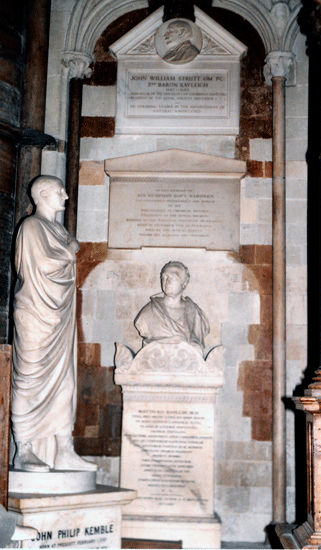
|
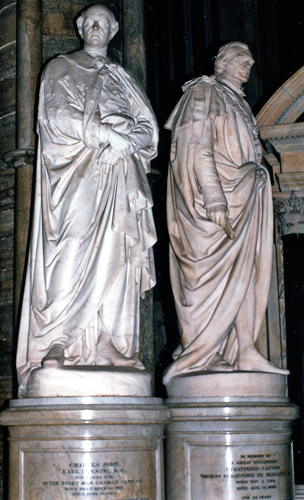 |
Above left:
This Cosmatic tomb-chest lies between the
Chapels of St Edmund and St Benedict and dates from the last
quarter of the thirteenth century. Recent research has revealed that it was almost certainly originally in
the Chapel of St Edward the Confessor and made for one of the
sons of Edward I, either John of Windsor (1271)
or Alfonso (1284).
Above next:
William Camden (1623)
Antiquary and author of Magna
Brittania
Above next: Standing left:
John Philip Kemble (1823) represented as Cato by J Flaxman
and finished after the latter's death by J E
Hinchliffe. The monument originally stood in the
North Transept. Kemble was buried in Lausanne,Switzerland. He was a celebrated actor and was born in
Prescot, Lancashire (where I was born), where Kemble Street,
is named after him. I remember a plaque in
Kemble Street on the house
where he was born. Back wall top: John
William Strutt, 3rd Baron Rayleigh OM PRS (1919) He succeeded
James Clerk Maxwell as Cavendish Professor of
Experimental Physics at Cambridge and was Chancellor
there
1908-10. He was joint discoverer of the noble gas Argon
for which he was rewarded the Nobel Prize. The bust
relief is by Francis Derwent Wood. Below
this: Sir Humphter Davy Bt FRS
(1829) Tablet by Sir F Chantrey. A
Cornishman, he invented the famous miners' lamp that was
named after him and from which he refused to profit. He
discovered the elements K, Na, B, Ca, Ba and Cd. He also
discovered the anaesthetic effect of nitrous oxide -
which is still used today. Teacher of Michael Faraday.
Buried at Geneva. Below this Mathew
Baillie MD (1823) Physician and anatomist. Buried at
Duntisbourne Abbey, Gloucestershire. Bust by Sir Francis
Chantrey.
Right from left to right:
Charles John Canning,
1st Earl of Canning (1862) 1st
Viceroy of India. He was buried with his father,
the Prime Minister, near by. By J H Foley.
Stratford Canning, 1st Viscount Canning
(1800) Diplomat.
By Sir J H Boehm. Verse on the
monument is by Tennyson. Buried at Frant,
Sussex. |
|
 |
North Choir
Aisle |
The recumbent
effigy is that of Lord John Thynne (1881) Cleric. Third son of the 2nd Marquis of Bath. He was
Canon of Westminster for 49 years and Sub-dean for 46.
Buried at Haynes, Beds. By H H Armstead.
Above are a series of five roundels, from left to right:
i)
Sir Georeg Gabriel Stokes, 1st Bt. PRS (1903 Mathematician. Like Newton
he was Lucasian Professor of Mathematics at Cambridge
and MP Cambridge. (and, like Newton, never spoke in the
house) Stoke's law is a simple equation in fluid
mechanics. Bronze bust by Sir W H Thornycroft.
ii)
John Couch Adams FRS (1892) Mathematician and Astronomer. He
predicted the existence of the planet Neptune based on
the movement of Uranus and using Newton's Law of Gravitation.
Marble bust by A Bruce Joy
iii) Joseph Lister OM FRS,
1st Baron Lister (1912) Surgeon. Pioneer of
antiseptic treatment, reducing the appalling death rate
from infection following surgery. Buried at Hamstead.
White marble bust by Sir T Brock.
iv)
Alfred Russel Wallace OM FRS (1913) Naturalist. He formulated a theory
of evolution by natural selection independently of
Darwin. In 1858 he and Darwin publicly announced in a
join paper to the Linnean Society. White marble bust by A Bruce Joy
v) Charles Robert Darwin FRS (1882)
Naturalist. Famous as the author of Origin of Species
and the theory of evolution by natural selection. Buried
in north aisle of nave near Newton. Bronze bust by
Sir J E Boehm.
Below the Stokes plaque (far left) and from top to
bottom:
i) James Prescot Joule FRS (1889) Physicist. Famous for establishing the
mechanical equivalent of heat. The SI unit of energy is
named the Joule after him. Buried at Sale, Cheshire. White
marble tablet.
ii) Sir Joseph Dalton Hooker OM CSI PRS (1911) Botanist. Friend of Darwin.
Director of Kew Gardens 1865-85. Published the Flora of
Antarctica, New Zealand and Tasmania. Buried at Kew.
White marble bust by F Bowcher
iii) Sir William Ramsay KCB FRS (1911)
Chemist. He discovered with Lord
Rayleigh Argon and alone isolated Helium, Neon, Krypton
and Xenon - all 'noble' gases. Bronze bust by
C L
Hartwell
|
|
| |
| |
| |
| |
| <City of London
I> <City
of London II> <City of London III> <City of Westminster-1> <City
of Westminster-2> <City of
Westminster - 4> <Borough
of Kensington & Chelsea> <Borough of
Wandsworth> |







